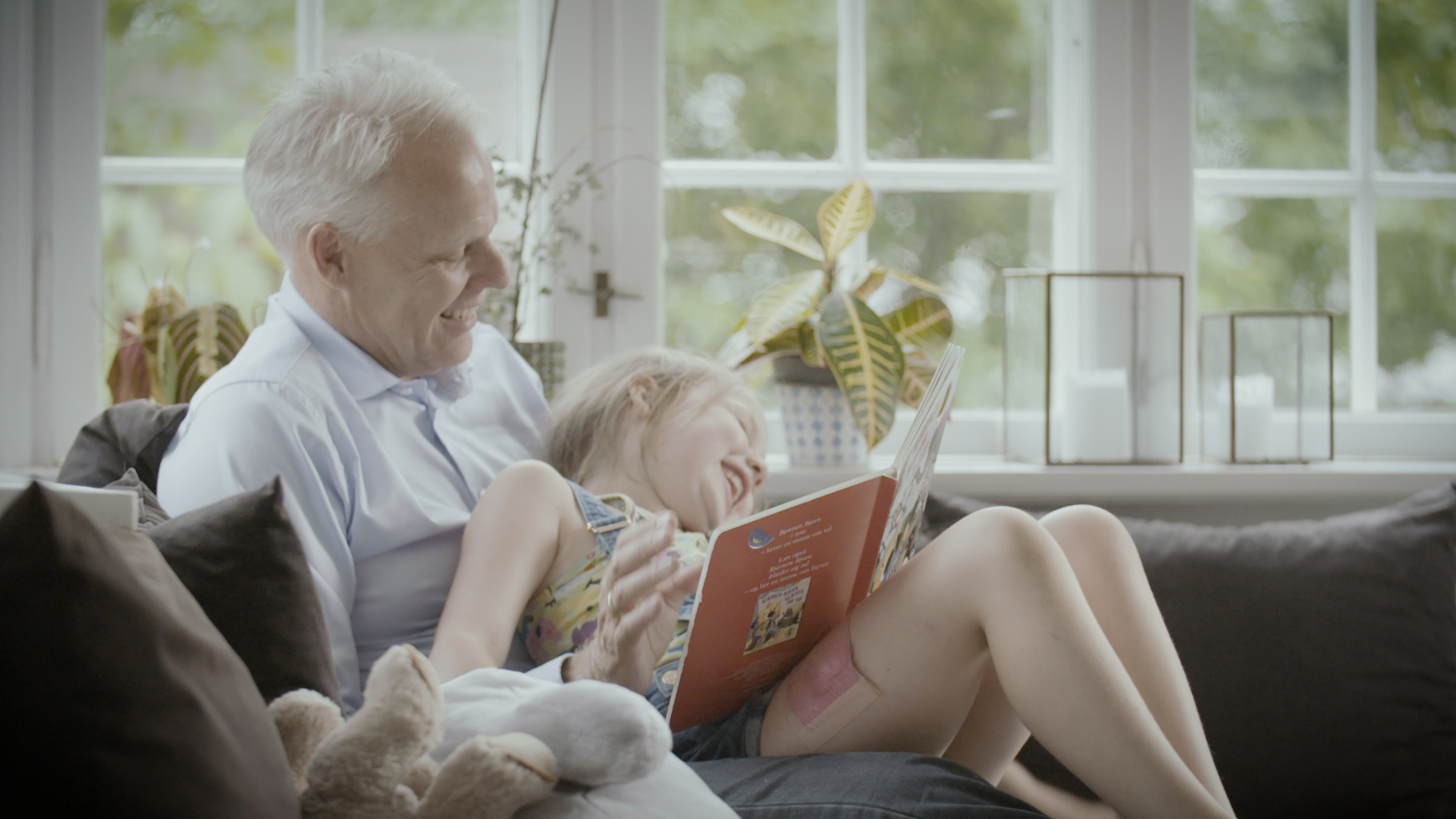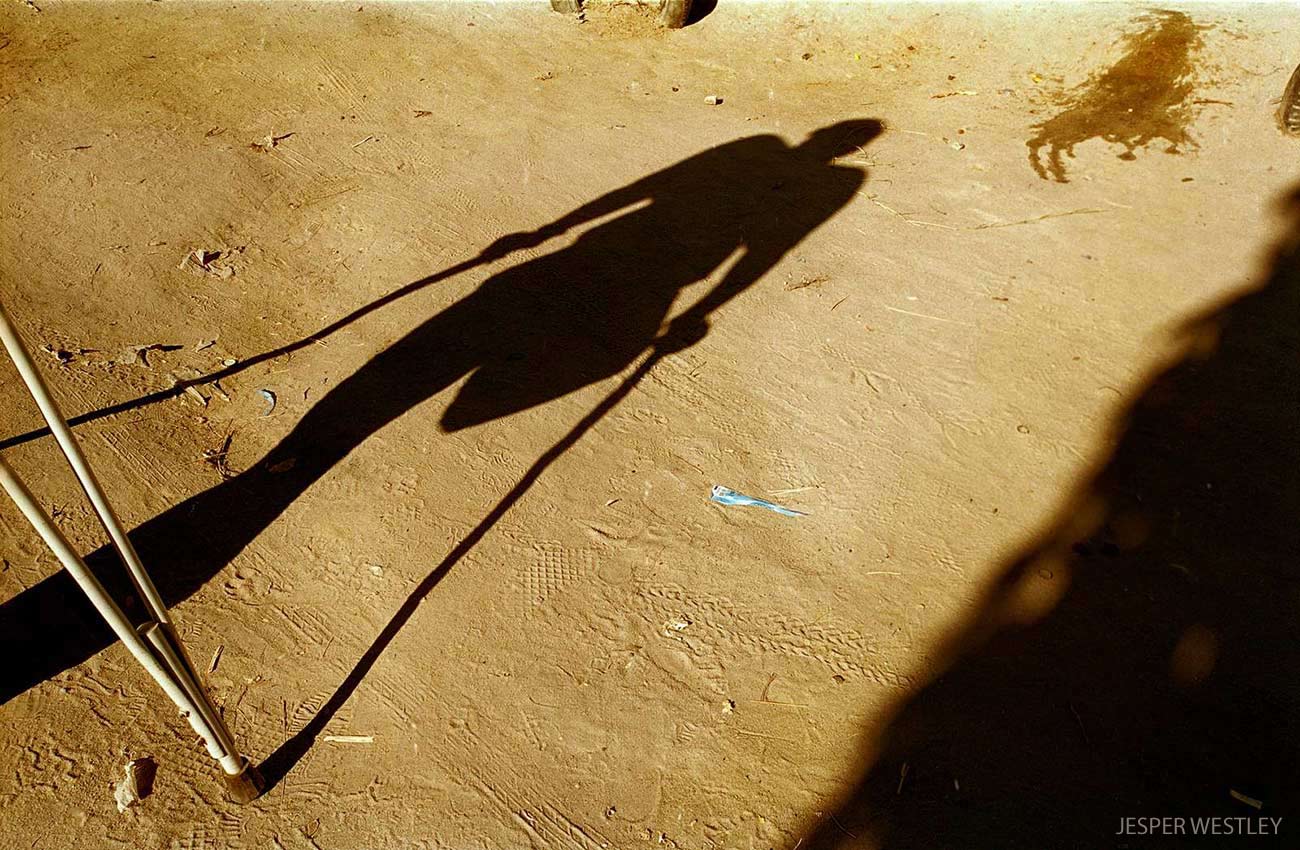
“The very first photo I ever took on a WDF assignment was in Tanzania
in 2002. Halfan was in his early forties and had a wife and several
children. The photo was taken six months after he lost his leg to
amputation caused by the complications of type 2 diabetes. It was my
first exposure to what can happen to a person and their family at the
hands of this disease.
Halfan was standing outside his house, watching life on the street pass by. Seeing the sun cast his shadow felt poignant and I just knew this was the shot – he is present but at the same time somehow absent.
I will never forget Halfan. He was very bright and had a very kind and jovial face, but the complications of diabetes would now always overshadow him.”
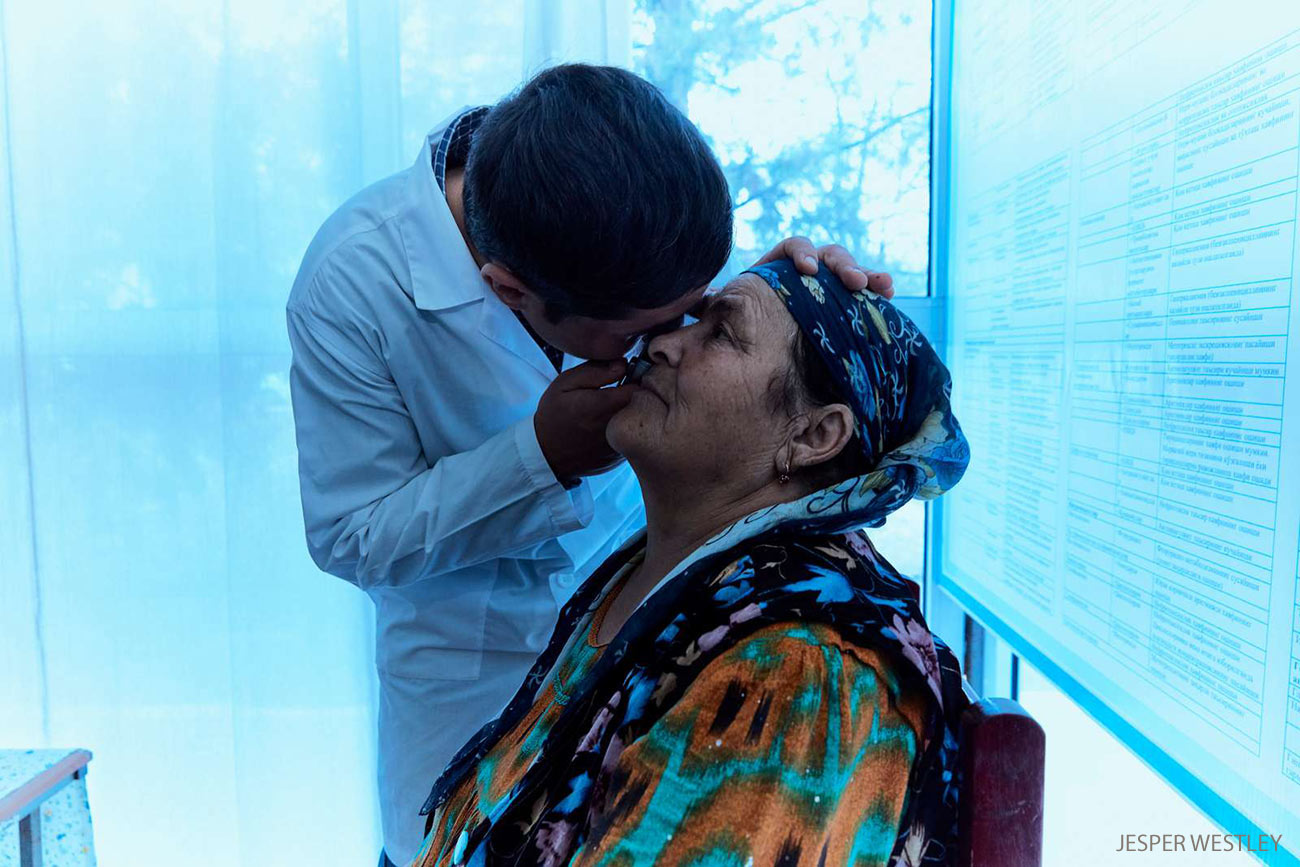
“When I first went to Uzbekistan, I thought it was going to be another overwhelming story of diabetes complications. But with each clinic and hospital I saw, I realised that this was a story of systems getting stronger, lives being changed and knowledge about diabetes built. That became my focus.
The Charity Union of Disabled Persons and Diabetics - UMID - is one of the oldest project partners of the WDF. This photo was taken at the Bukhara Dispensary, which was housed in the former residence of a Soviet official.
The woman in the photo had lost two brothers to diabetes, and was determined not to herself succumb. For 10 years, she had visited the UMID run clinic twice a year. Dr Nimatov Mirmuhsin examined her and declared her eyes healthy.”
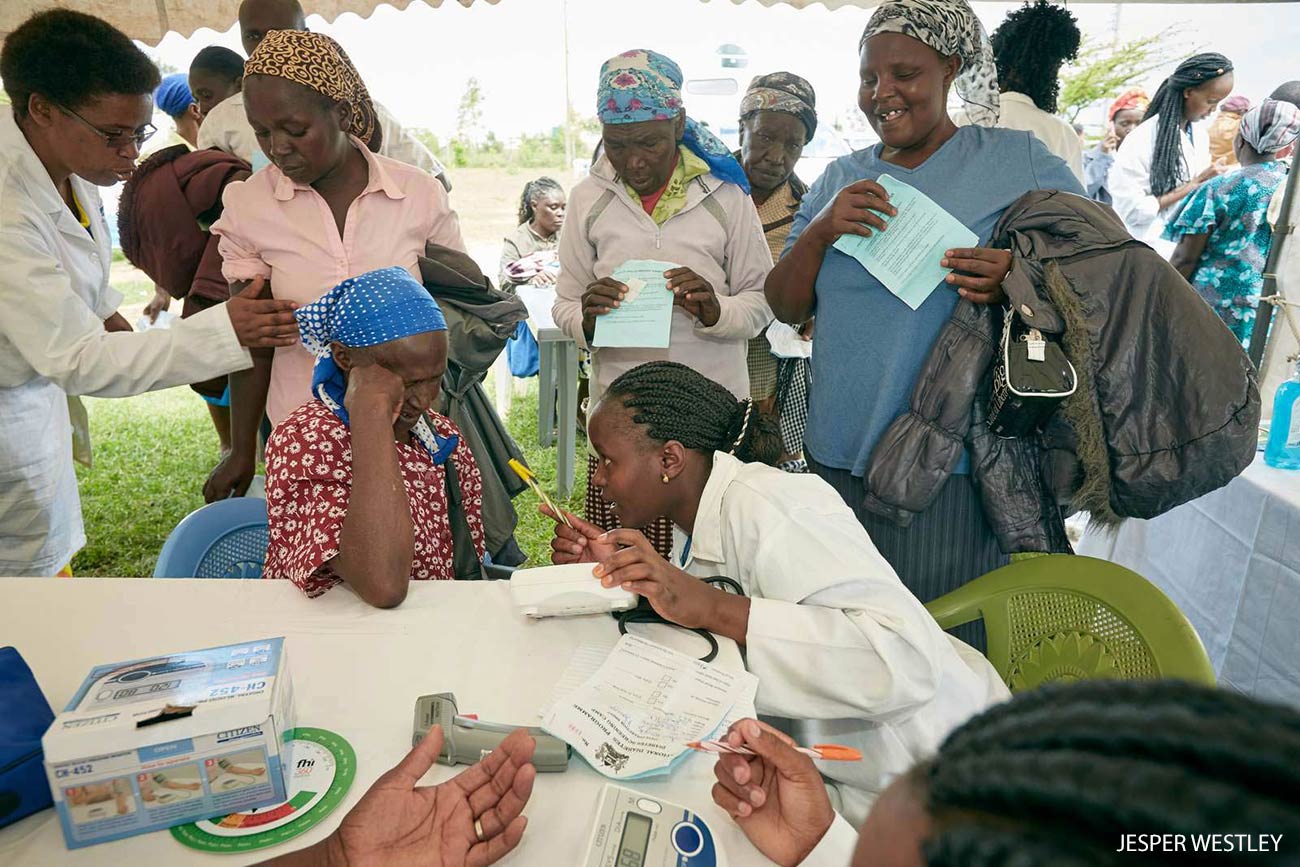
“The Kenya Defeat Diabetes Association (KDDA) was founded by a 70 year-old man named Reuben Magoko shortly after he himself was diagnosed with type 2 diabetes. The WDF supported the grassroots organisation, and today it is working across Kenya to create awareness, empower and mobilise people with diabetes to take control of their disease.
This photo was taken at a medical camp organised by KDDA and the local government in Laikipia County, about 300 km north of Nairobi in the shadow of Mount Kenya. The camp offered blood pressure, body mass index and blood glucose screening, as well as other medical services, to the roughly 12,000 residents of seven local villages.
At the camp there was an energy and I think it comes through in this picture, where the connection between the volunteer and the local woman is palpable. It reflects Reuben’s passion, and the spirit of empowerment that underpins KDDA and WDF’s partnership.
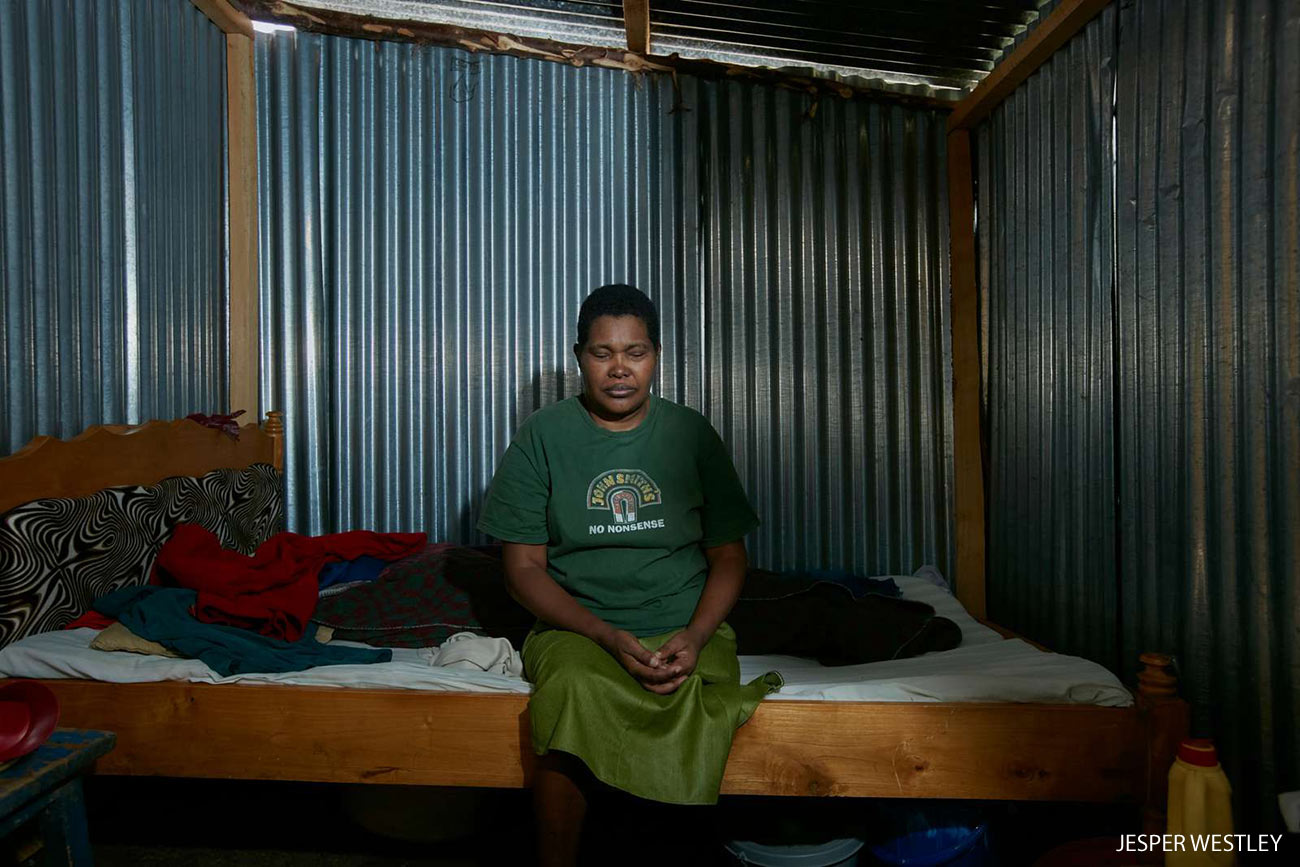
“Grace was 52 when I took this photo. She was diagnosed with diabetes 10 years previously and in 2012 she was admitted to hospital with a severe foot ulcer, which eventually led to an amputation below the knee. The following year she lost her sight in both eyes.
In Kenya, it is often the woman who takes care of the farming, cooking, childcare, everything. When Grace suffered complications, she lost her role in the family, her core purpose. When I met her, she was spending most of her days in a tiny hut of corrugated metal. Her oldest daughter cared for her while the daughter’s husband worked as a carpenter.
When I was shooting, a song came on and she disappeared into a hum. For her, life became something that almost entirely happened inside her head – all she could do was listen to the radio. Despite this, I was surprised at how well she had come to terms with her situation and the resilience she displayed.”
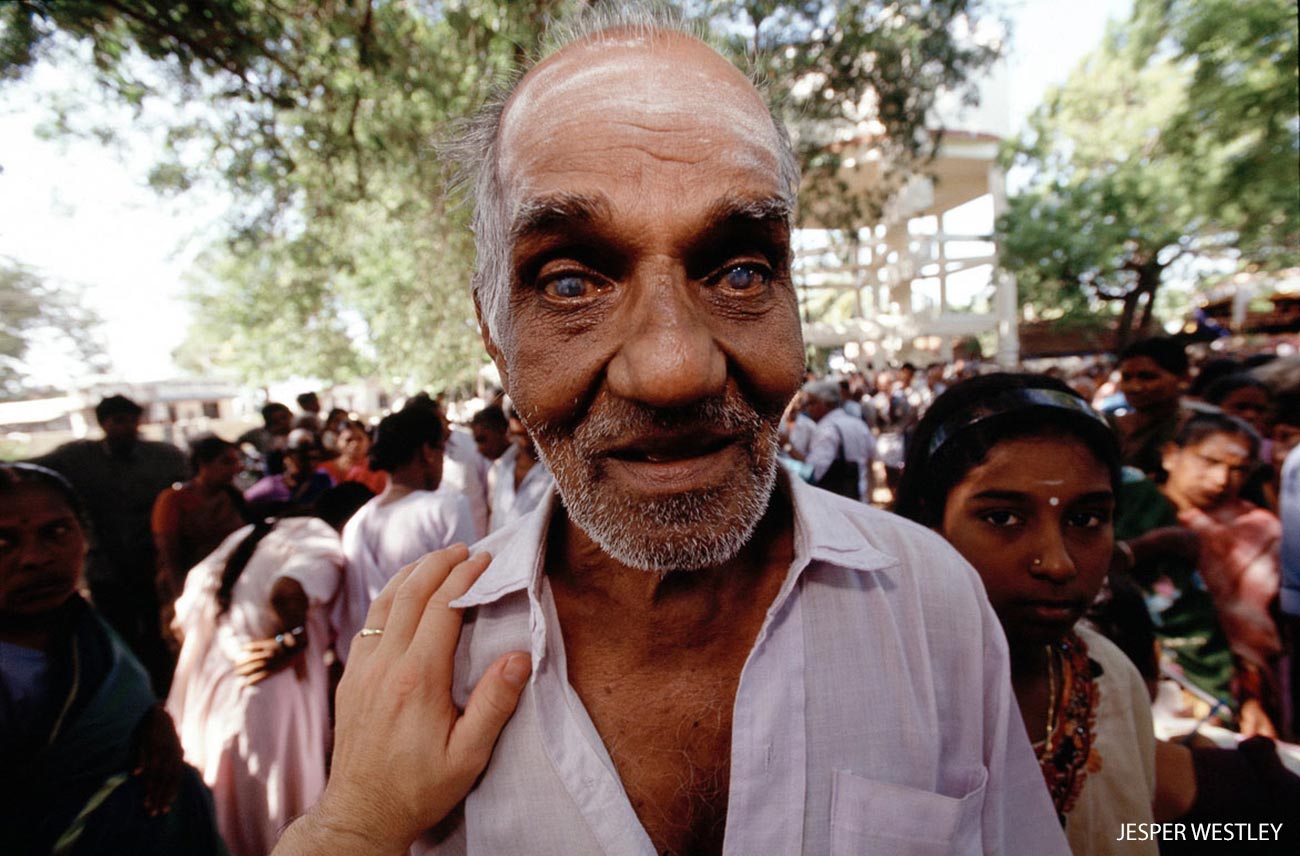
“The Aravind Eye Hospital chain was founded in Madurai in 1976. They were one of WDF’s first partners, and their sustainable model for treating deprived patients has had a big influence on the Foundation. Seeing how they used rickshaws with speakers to invite people for free eye screening, and then watching them quickly and efficiently screen the thousands who responded, was fascinating.
From a crowd that numbered in the thousands, this man appeared in front of me. He could hear everything around him but he was lost. I stopped him and put my hand on his shoulder. I spoke very calmly to him and at the same time took the shot.
This photo reminds me that as a photographer who spends a lot of time looking through a lens, it is sometimes more important to open your broader senses, for things to open up. That moment of connection, I will never forget.”
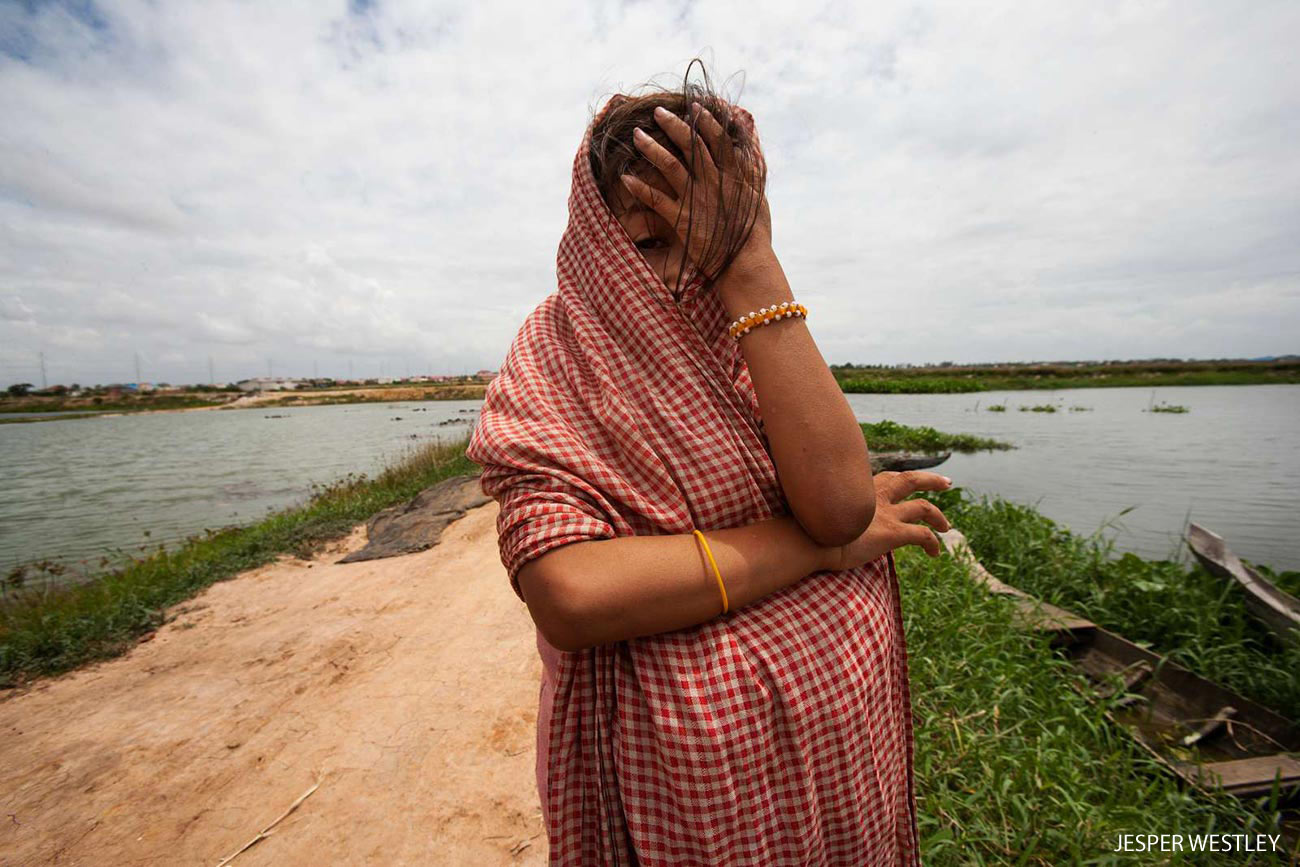
“I took this photo while on a fundraising trip for the WDF to support the building and staffing of a new diabetes clinic in Cambodia. When I arrived we were looking for children with type 1 diabetes – exactly the people who would benefit from the eventual facility. There was a special urgency to this trip because quite simply, without treatment, these children die early.
Finally we found this young girl who was around 13 years old. No one was completely sure, as no records were kept. She was already suffering from eye complications and was lucky to be alive. Her father and mother lived by fishing from the small lake you can see behind her. Each day she had to go with them but the light was bright and hurt her eyes. If they didn’t catch anything, she went hungry.
A Dutch NGO was supplying her with some insulin – but the family was not always able to afford the broader treatment she needed. She is one of the kids I would like to go back and find. I often wonder where she and others like her are today.”
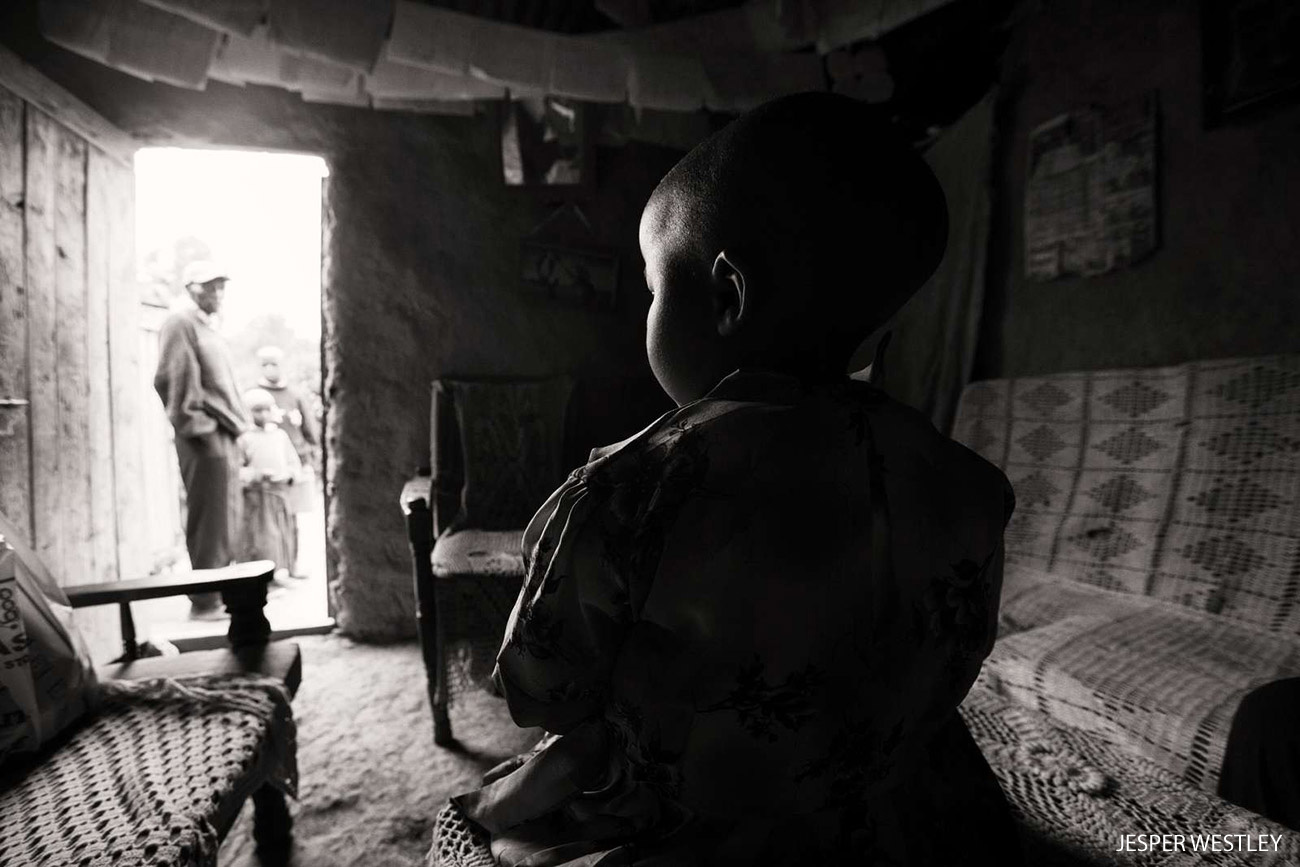
“I met this girl and her family of five siblings through a WDF partner. She was five or six years old but looked like she was two due to her stunted growth. The family’s life was complicated and they were often faced with having to either treat her diabetes or have enough money to take care of the whole household.
In the photo, the girl is sitting alone. I asked the family what she does when she is not being carried on her mother’s back. They told me that she sits in this room in that little house. For me it speaks to stigmatisation, ostracism and loneliness – a less discussed but very real aspect of life with diabetes in many countries.”
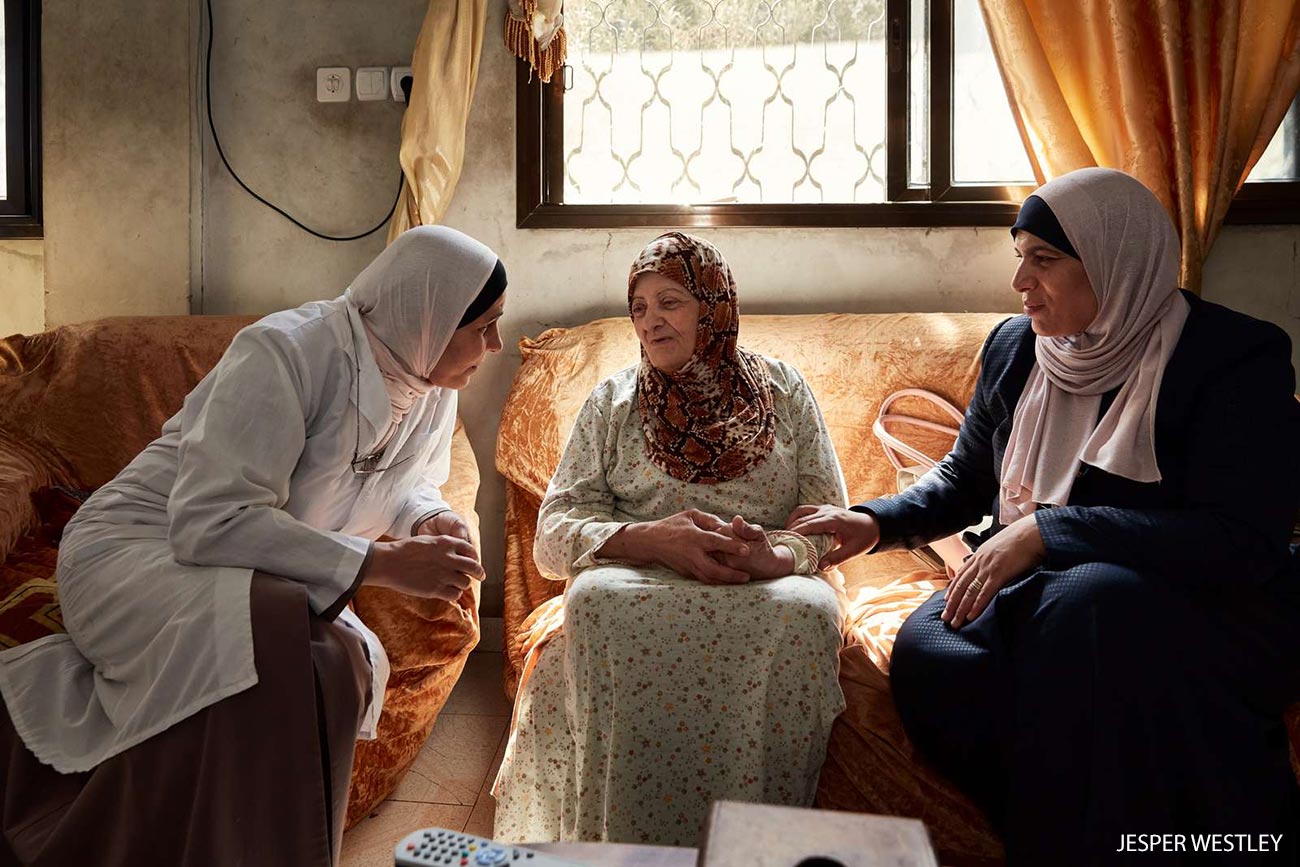
“When I firs“The woman in this photo is one of the internally displaced people living in a camp run by the UN Relief and Works Agency (UNRWA), a partner of the WDF. As I walk into the house, I’m met by the sight and smell of extreme poverty. She was elderly, very frail and extremely poor, and lived with her husband, who also had type 2 diabetes, and two handicapped adult sons. She had to make what little money she had stretch to buy both medicine and food. She had a variety of medicines in her home, but due to her blindness, she was not able to read any of the labels.
The empathy shown by the two UNWRA nurses in the photo is tangible. It was the respect and closeness they showed and the light that came in which made me take that photo all of a sudden made the whole visit just came together in that shot. This sums up the importance of the local clinic to the people of a local community.
When we left, the nurses thanked me for introducing them to this woman. They were going to start a fund for her and they would do regular visits to bring her to the clinic. This and many other experiences of working with the WDF give me hope that change is possible.”t went to Uzbekistan, I thought it was going to be another overwhelming story of diabetes complications. But with each clinic and hospital I saw, I realised that this was a story of systems getting stronger, lives being changed and knowledge about diabetes built. That became my focus.
The Charity Union of Disabled Persons and Diabetics - UMID - is one of the oldest project partners of the WDF. This photo was taken at the Bukhara Dispensary, which was housed in the former residence of a Soviet official.
The woman in the photo had lost two brothers to diabetes, and was determined not to herself succumb. For 10 years, she had visited the UMID run clinic twice a year. Dr Nimatov Mirmuhsin examined her and declared her eyes healthy.”
